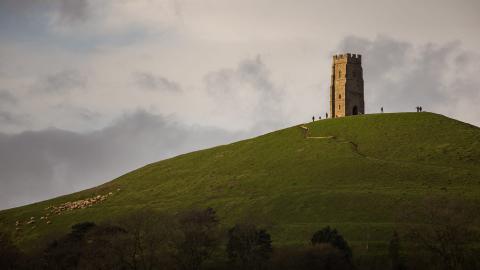Joseph Bazalgette
Joseph Bazalgette saved thousands of lives by sorting the sewers. So why’s the ‘Sewer King’ who risked his own health to help others, whose system’s still used by millions today, largely forgotten?
Joseph William Bazalgette is born at home in Enfield, London on 28 March 1819. His father is a retired Royal Navy captain. Despite a French family background, his father saw active combat and was wounded during the Napoleonic wars. Joseph’s mother, Theresa Philo Pilton, has eight other children. But Joseph is their only son. He is a small child and will remain of small stature.
KILLER CHOLERA
When Joseph is 12, England has its first recorded case of cholera. It is a dangerous age. British people still need to take quinine to fight off the ever present threat of malaria. When Queen Victoria comes to the throne, only a half of London’s infants live to their fifth birthday. Urban life expectancy is 35 when Joseph is born. It’s down to 29 just a decade later.
Victorian understanding of disease is little more developed than that of the Romans. Most think diseases like cholera are spread through the air, through smells. It’s a fatal misunderstanding of this waterborne killer.
A census will soon reveal Britain is the first ever society to have half its population living in towns. And like nearly all Victorian cities, London’s massive growth has largely been unplanned. Factories are built, then homes to house the workers and from their windows, chamber pots are emptied directly into the street. Those with indoor toilets find their waste joining overflowing cesspools. An antiquated medieval sewage system is overloaded. Human waste runs through the streets contaminating most drinking water.
“He who drinks a tumbler of London Water has literally in his stomach more animated beings than there are Men, Women and Children on the face of the Globe.”
Sydney Smith, Anglican Cleric
This is the daily reality for many of London’s near three million inhabitants. London has its first cholera outbreak in 1832. The disease becomes known as ‘King Cholera’ because of its mastery over the fate of its victims.
In 1836, Bazalgette leaves London to work in Northern Ireland. His private education pays off with his articling to renowned Irish civil engineer, Sir John Benjamin MacNeill. Bazalgette’s projects involve land drainage and land reclamation. The lessons he learns here will later save London.
In 1842 he sets up his own private consulting practice in Westminster, near Parliament Square. His proximity to the centre of politics proves propitious.
MARRIAGE & MENTAL BREAKDOWN
In 1845, he marries. Accounts differ on the number of children they have but most specify either ten, or eleven. Over the following two years, Bazalgette intensively works on the rapidly expanding rail network. But it comes at a huge cost to his health. He suffers a complete nervous breakdown. It will not be the first time that the tireless engineer puts work before his own well being. He recuperates by going to the countryside.
As he leaves, in 1848, the well meaning health reformer Edwin Chadwick closes thousands of cesspits. The waste drains into the drinking water of the capital. The resultant cholera outbreak kills 14,137 Londoners. In 1849, Bazalgette returns to London deep in its second cholera epidemic. His father dies that year and his mother the next.
He is appointed as Assistant Surveyor to the Metropolitan Commission of Sewers in London. At this time, there’s no unified system of sewage and drainage. In a small way, sewers tunnel clearage relies on the Toshers and Mudlarks (impoverished predecessors of today’s Mud Men) to sort through sewage looking for items of value that would otherwise block the small tunnels and saturate the river’s shores. Bazalgette, under head engineer Frank Forster, starts planning a more systematic solution. But the stress of such a project is too much for Forster. By 1852 he’s quit and he soon dies. This is perhaps the worst job opening for a man of Bazalgette’s character. But between 1853 and 1854, more than 10,738 Londoners die from another cholera outbreak.
In 1854, Bazalgette submits his solution.
"...the appointed physician to the metropolitan organism"
Motto of the Metropolitan Board of Works
In 1855 the Metropolis Management Act creates the Metropolitan Board of Works. Its task: For the first time, to make sure that over a hundred square miles of London has the right roads, lighting, bridges, tunnels and crucially, sewers. Championed by fellow French descended Isambard Brunel, it elects Joseph Bazalgette on a salary of £1000 a year as its chief engineer. Over the next three decades, he will transform London.
The suffocating hot summer of 1858 creates the 'Great Stink of London'. The smell of untreated human sewage overwhelms all near the Thames, including the MPs in Parliament. The curtains of the Commons are soaked in chloride of lime in a radical early attempt at air freshening. It doesn’t work. With the MPs minds focused, it takes just over a fortnight to pass into law the legislation needed to set Bazalgette off. Separate drainage districts are unified into one. Rain temporarily washes away the problem but Bazalgette remains under extreme political scrutiny.
He goes through bureaucracy blockages and financial foul ups as great as the mess beneath the capital. Under enormous political pressure, and spurred on by his own exhausting work ethic, he rapidly plans an underground infrastructure. Despite being devised under such taxing conditions, his system will survive into the 21st century.
Opponents to his scheme include those who believe his scheme too small. It is also contrary to those who want to send the waste inland for use as fertiliser on farms. But his more ‘limited’ scheme is the most efficient within a realistic timeframe. Everyone’s aware that there’s only one shot to disrupt London on this scale. And yet, the scheme must be good enough to last for centuries. The scale of the project is overwhelming. It is the biggest civil engineering project in the world at the time.
To avoid digging up half of central London, Bazalgette proposes huge embankments along the Thames that will contain new massive main sewer pipes. These lower level sewers will intercept the foul water from existing sewers and divert it along to treatment works, and away into the tidal Thames.
So large is the land reclamation suggested to build these embankments, it will be able to house an underground tube line.
"...the most extensive and wonderful work of modern times"
The Observe, 14 April 1861
KING CHOLERA VERSUS THE SEWER KING
By the time Bazalgette gets going, 30,000 Londoners lie dead because of cholera. Thousands more are dying throughout the country. Over the next 16 years, Bazalgette constructs 82 miles (132km) of main intercepting sewers, 1100 miles of street sewers, four pumping stations and two treatment works. The by now balding, grey whiskered engineer calculates the size and diameter of tunnel needed to take the waste of every citizen. And then he doubles it.
He demands that the brick built sewer tunnels are wide at the top, in the shape of an upside down egg. This is contrary to the narrow pipes favoured by most engineers, the accountants and many health reformers. Bazalgette’s design and increased diameter means the sewers can withstand the weight of the city above, wash away waste even with little rain and accommodate massively increased use.
But as with his railway work, this attention to detail, combined with his every decision being scrutinised and questioned, affects his health. The man who single-handedly did more than any other to improve the health of the Victorian capital, was potentially working himself into an early grave.
HE PUT THE RIVER IN CHAINS
Latin translation of ‘Flumini vincula posvit’, the words above his Thames embankment monument
This marvel of engineering is done before the age of computers or the aid of the combustion engine. The pumping stations he opens in Deptford in 1864 and in Crossness the following year are steam powered.
Bazalgette’s son, Edward, joins him as an engineer on the project. By 1866 most of London is connected to a sewer network devised by Bazalgette. The Victoria, Albert and Chelsea Embankments built to contain the huge sewers narrow the Thames by 50 yards (45m) reclaiming over 52 acres. Sadly, delays to allow the embankments to also house a new Underground line mean a final cholera epidemic strikes London that year.
By 1875, engineer Bazalgette has spent £6.5 million building or revamping 1,300 miles of sewers in London. It can deal daily with 1.8 billion litres or 420 million gallons of water and waste.
That year, he is knighted.
It’s not till 1885 that the last sections are completed. During this time, he shares his knowledge with towns and cities throughout Britain, revolutionising public health nationwide. But he doesn’t just work underground. He helps clear the slums of Soho and create Shaftesbury Avenue in the West End. The 1885 Metropolitan Board of Works Act gives Bazalgette the ability to build the Woolwich Ferry. These are just some of the innumerable civil projects which still to this day bear his mark.
In 1888, he’s elected President of the Institution of Civil Engineers. He joins a long line started by Thomas Telford and carried on by such giants as George Stephenson.
And, despite his nervous disposition and life expectancy being just 30 when he was born, on 15 March 1891, Bazalgette dies in his Wimbledon home, aged 72.
Joseph William Bazalgette made probably the single biggest contribution to the health of Victorian Londoners. It is because of his work that the Thames is now the cleanest metropolitan river in the world. And it’s because of him that cholera, along with other diseases such as typhoid, are now part of British history.
But for the man who saved London and made its modern incarnation possible, there are scant few monuments. Perhaps this is because he redesigned, rather than created, bridges and roads, and that most of his achievements are, quite literally, beneath us. The main monument to the man is at his most visible achievement, the Thames Embankment. But this small bust is, ironically, in the shadows of a nearby bridge.










